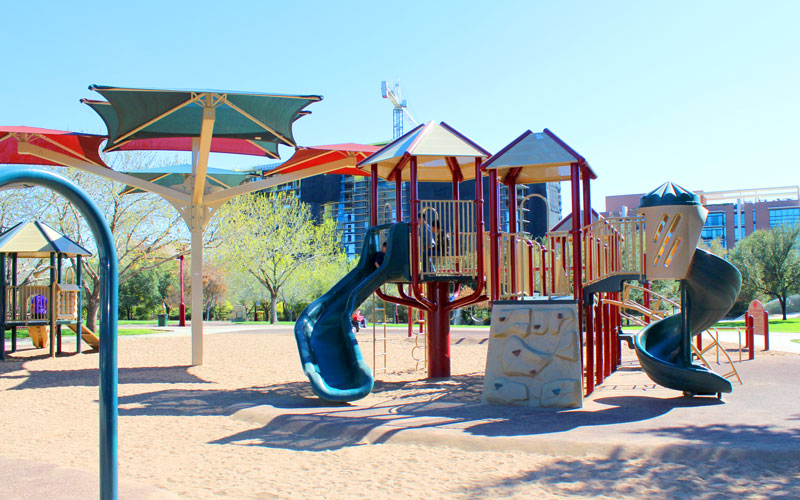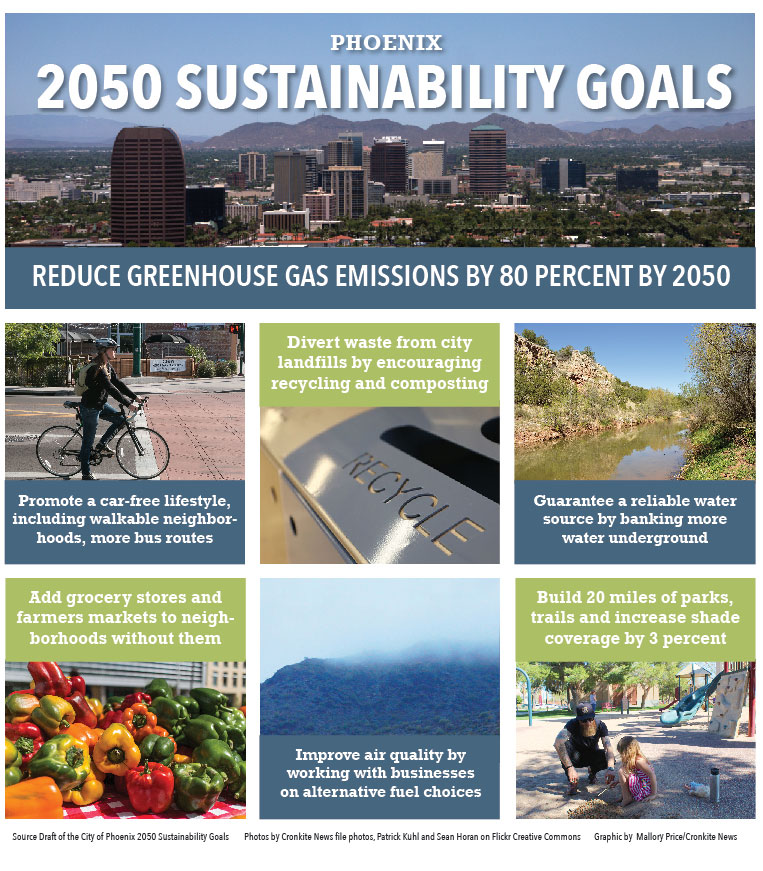
The Phoenix 2050 Sustainability Goals adds 20 miles of parks and trails. (Mallory Price/Cronkite News)
Phoenix leaders want to make neighborhoods happier and healthier under a proposal to create a more environmentally conscious city — but they want to hear from residents first.
Expanding public transit to every neighborhood, building parks and trails and relying on locally sourced food are among proposals to reduce greenhouse gases by 80 percent over the next three decades, said Mark Hartman, who oversees the city’s environmental efforts. The plan will affect Phoenix residents’ lives from the way they get to work to the way they handle uneaten food.
“The goal is really to improve the quality of life for all,” Hartman said. The draft, called 2050 Sustainability Goals in reference to the deadline year, aligns with more than 50 cities trying their own solutions to climate change. Cities like Phoenix want to reduce greenhouse gas emissions because they contribute to rising global temperatures.
City officials are reaching out to the public at events and planning groups, Hartman said. To provide feedback on the goal go to www.research.net/r/PHX2050.
Scott Cloutier, senior sustainability scientist at Arizona State University, said that the city’s sustainability goals may also increase the happiness of a community. Cloutier, who researches neighborhood happiness, found that adding more parks can increase the short-term satisfaction of residents.
The Phoenix proposal adds 20 miles of parks and trails. Phoenix also plans to increase shade coverage by three percent by planting trees and building shade structures.That will reduce heat caused by buildings and asphalt, which is known as an urban heat island.
The city plans to reduce transportation emissions by extending bus services to every Phoenix neighborhood, Hartman said. Voters approved in August a plan to triple light rail miles and improve public transit. To further reduce reliance on vehicles, the 2050 plan calls for 1,000 more bikes for the city’s rental program, more fuel efficient cars and other alternative energy sources.
Other recommendations are to:
- Encourage business and residents to recycle and compost waste to divert waste from landfills.
- Bank more water underground.
- Make food more available to underserved neighborhoods with zoning laws that allow grocery stores, food trucks, community gardens and public markets.
Reducing greenhouse gas emissions will help improve air quality in the short-term, but more needs to be done to eliminate them in the atmosphere, said Nancy Selover, state climatologist. The goal is worthwhile but it will take hundreds of years for significant environmental effects. Greenhouse gases like carbon dioxide remain in the atmosphere for centuries, she said.
“If that is all you do, I don’t think it will be enough because it will be a long, long, long time before you see any change. That’s not to say that it is not something you should do,” Selover said.
